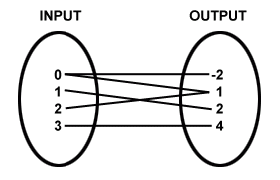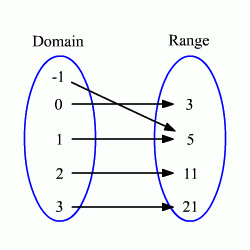In this article, you will learn about simplifying algebraic fractions, reducing the fraction to its lowest term, performing arithmetical operations on algebraic fractions. Get the solved example questions on algebraic fractions to understand the concept better. Each and Every Problem is explained with Step by Step Solutions so that you can learn the Procedure on how to solve related problems easily.
Solved Examples on Algebraic Fractions
Example 1.
Reduce the algebraic fractions to their lowest terms?
(i) (3x² – 6y²) / (6x – 12y)
(ii) (5x² – 5y²) / (25x² + 50xy + 25y²)
(iii) (3ab – 3a²) / (3a² – 6ab + 3b²)
Solution:
(i) (6x² – 6y²) / (12x – 12y)
Factorizing the numerator and denominator separately and cancel the common factors we get,
= (6 (x² – y²)) / ((12 (x – y))
= (x² – y²) / (2 (x – y))
= ((x – y) (x + y)) / (2 (x – y))
= (x + y) / 2
(ii) (5x² – 5y²) / (25x² + 50xy + 25y²)
Factorizing the numerator and denominator separately and cancel the common factors we get,
= (5 (x² – y²)) / (25 (x² + 2xy + y²))
= (x² – y²) / (5 (x² + 2xy + y²))
= [(x + y) (x – y)] / [5 (x² + xy + xy + y²)]
= [(x + y) (x – y)] / [5 (x( x + y) + y (x + y)]
= [(x + y) (x – y)] / [5 ((x + y) (x + y)]
= (x – y) / [5 (x + y)]
(iii) (3ab – 3a²) / (3a² – 6ab + 3b²)
Factorizing the numerator and denominator separately and cancel the common factors we get,
= [3a (b – a)] / [(3a² – 3ab – 3ab + 3b²)]
= [3a (b – a)] / [(3a(a – b) – 3b(a – b))]
= [3a (b – a)] / [(3a – 3b) (a – b)]
= [-3a (a – b)] / [(3a – 3b) (a – b)]
= -3a / 3(a – b)
= -a / (a – b)
Example 2.
Simplify the algebraic fractions?
(i) [1/x + 1/y] / [1/x² – 1/y²]
(ii) [(u + v) / 2u – 2v) + (v – u) / (2v + 2u) + 2v² / (u² – v²)] [1/v – 1/u]
(iii) [(a³ – ab² + b³) / (a – b)³ – b / (a – b)] [(a² – 2ab + 2b²) / (a² – ab + b²) – b/a]
Solution:
(i) [1/x + 1/y] / [1/x² – 1/y²]
Factorize the numerator
1/x + 1/y = (y + x) / (xy)
Factorize the denominator
1/x² – 1/y² = (y² – x²) / (x²y²)
= (y + x) (y – x) / x²y²
Simplification of the given expression after factorizing the numerator and the denominator:
[(y + x) / (xy)] / [(y + x) (y – x) / x²y²]
= [(y + x) * x²y²] / [(y + x) (y – x) * xy]
= xy / (y – x)
(ii) [(u + v) / 2u – 2v) + (v – u) / (2v + 2u) + 2v² / (u² – v²)] * [1/v – 1/u]
Factorize the denominators
2(u – v), 2 (u + v), (u +v) (u – v)
L.C.M of first expression is 2 (u + v) (u – v), second expression is uv
= [((u + v) * (u + v) / 2(u – v) (u + v)) + ((v – u) * (v – u) / 2 (u + v) (u – v)) + 2v² * 2 / 2 (u + v) (u – v)] * [u – v / vu]
= [(u + v)² / 2(u – v) (u + v) + (v – u)² / 2(u – v) (u + v) + 4v² / 2(u – v) (u + v)] * [u – v / vu]
= [((u + v)² + (v – u)² + 4v²) / 2(u – v) (u + v)] * [u – v / vu]
= [(u² + v² + 2uv + v² + u² – 2uv + 4v²) / 2(u – v) (u + v)] * [u – v / vu]
= [(2u² + 6v²) / 2(u – v) (u + v)] * [u – v / vu]
= [2u³ -2u²v + 6v²u + 6v³] / [2(u – v) (u + v)vu]
= 2u² (u – v) + 6v² (u + v) / [2(u – v) (u + v)vu]
= 2[u² (u – v) + 3v² (u + v)] / [2(u – v) (u + v)vu]
= [u² (u – v) + 3v² (u + v)] / [(u – v) (u + v)vu]
(iii) [(a³ – ab² + b³) / (a – b)³ – b / (a – b)] [(a² – 2ab + 2b²) / (a² – ab + b²) – b/a]
Factorize the denominators
(a – b)³, (a – b) and a² – ab + b², a
L.C.M of (a – b)³, (a – b) is (a – b)³, L.C.M of a² – ab + b², a is a (a² – ab + b²)
Express all fractions in terms of the lowest common denominator.
= [(a³ – ab² + b³) / (a – b)³ – (b (a – b)²) / (a – b)³] [(a (a² – 2ab + 2b²)) / a (a² – ab + b²) – b (a² – ab + b²) / a (a² – ab + b²)]
= [(a³ – ab² + b³) / (a – b)³ – (b (a² – 2ab + b²) / (a – b)³] * [(a³ – 2a²b + 2ab²)) / a (a² – ab + b²) – (a²b – ab² + b³) / a (a² – ab + b²)]
= [(a³ – ab² + b³) / (a – b)³ – (a²b – 2ab² + b³) / (a – b)³] * [(a³ – 2a²b + 2ab²) / a (a² – ab + b²) – (a²b – ab² + b³) / a (a² – ab + b²)]
= [(a³ – ab² + b³ – a²b + 2ab² – b³) / (a – b)³] * [(a³ – 2a²b + 2ab² – a²b + ab² – b³) / a (a² – ab + b²)]
= [(a³ + ab² – a²b) / (a – b)³] * [(a³ – 3a²b + 3ab² – b³) / a (a² – ab + b²)]
= [(a³ + ab² – a²b) / (a – b)³] * [(a – b)³ / a (a² – ab + b²)]
= [(a³ + ab² – a²b) (a – b)³] / [(a – b)³ a (a² – ab + b²)]
= [a (a² – ab + b²)] / [a (a² – ab + b²)]
= 1
Example 3.
Simplify the sum and difference of algebraic fractions?
(i) (2x – 3y) / x + (4x² – 5y²) / xy
(ii) x / ac – x / bc + x / ab
Solution:
(i) (2x – 3y) / x + (4x² – 5y²) / xy
L.C.M of denominators is xy.
Express all fractions in terms of the lowest common denominator.
= y(2x – 3y) / xy + (4x² – 5y²) / xy
= (2xy – 3y² + 4x² – 5y²) / xy
= (4x² + 2xy – 8y²) / xy
= 2(2x² + xy – 4y²) / xy
(ii) x / ac – x / bc + x / ab
L.C.M of all denominators is abc
Express all fractions in terms of the lowest common denominator.
= bx / abc – ax / abc + cx / abc
= (bx – ax + cx) / abc
= x(b – a + c) / abc
Example 4.
Simplify the product and quotient of algebraic fractions
(i) (3x² – 3y²) / (12x – 12y)
(ii) (x – y) : (1/x + 1/y)
Solution:
(i) (3x² – 3y²) / (12x – 12y)
Factorize numerators and denominators
= 3(x² – y²) / 12 (x – y)
= (x + y) (x – y) / 4 (x – y)
= (x + y) / 4
(ii) (x – y) : (1/x + 1/y)
= (x – y) : (y + x) / xy)
= xy (x – y) / (x + y)












